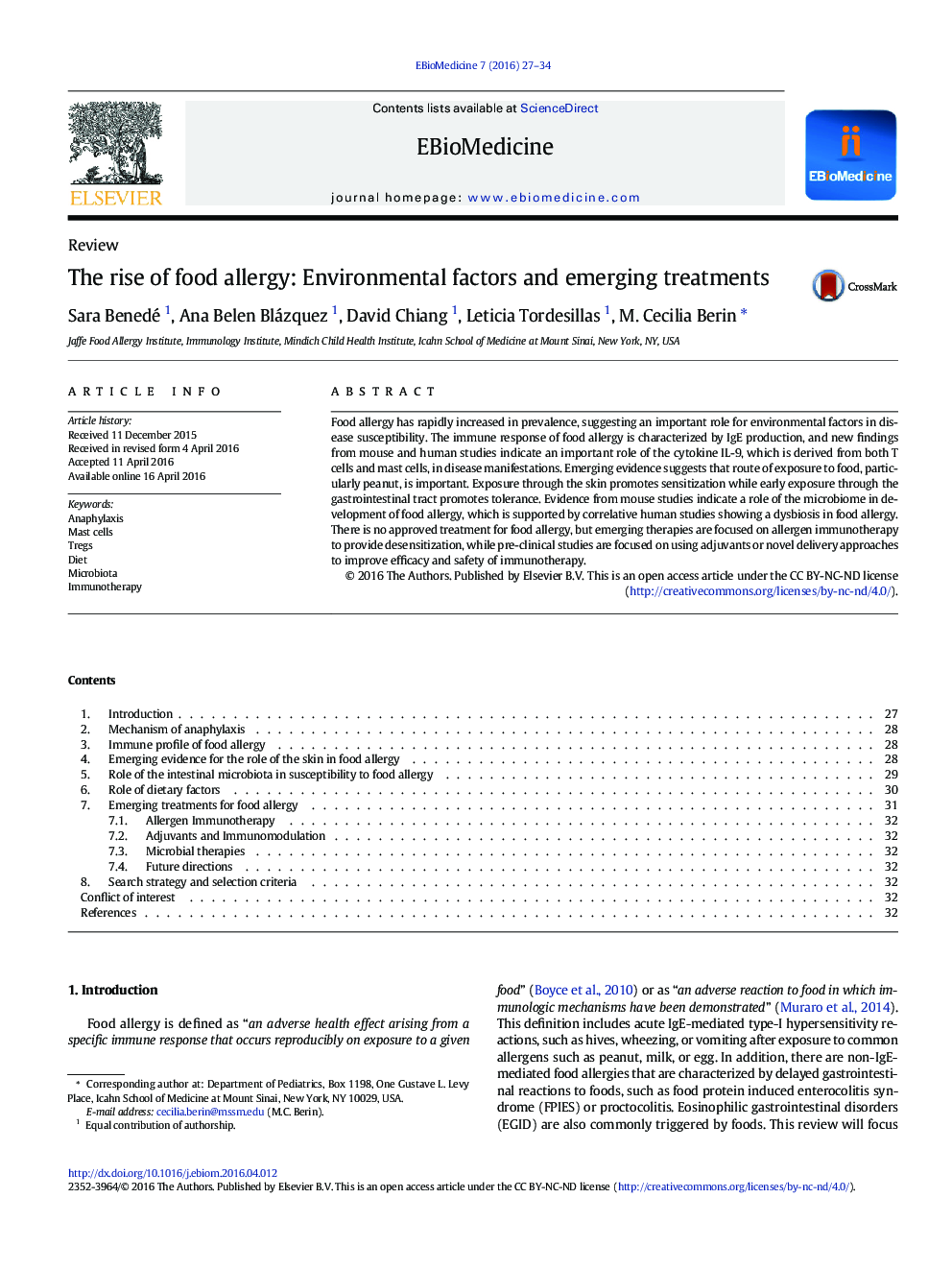| کد مقاله | کد نشریه | سال انتشار | مقاله انگلیسی | نسخه تمام متن |
|---|---|---|---|---|
| 2120826 | 1546892 | 2016 | 8 صفحه PDF | دانلود رایگان |
• Emerging evidence suggests that route of exposure to food allergens in early life determines sensitization versus tolerance.
• The microbiota and dietary factors appear to play a key role in susceptibility to food allergy.
• Immunotherapy applied via different routes is currently the most promising form of experimental treatment for food allergy.
Food allergy has rapidly increased in prevalence, suggesting an important role for environmental factors in disease susceptibility. The immune response of food allergy is characterized by IgE production, and new findings from mouse and human studies indicate an important role of the cytokine IL-9, which is derived from both T cells and mast cells, in disease manifestations. Emerging evidence suggests that route of exposure to food, particularly peanut, is important. Exposure through the skin promotes sensitization while early exposure through the gastrointestinal tract promotes tolerance. Evidence from mouse studies indicate a role of the microbiome in development of food allergy, which is supported by correlative human studies showing a dysbiosis in food allergy. There is no approved treatment for food allergy, but emerging therapies are focused on allergen immunotherapy to provide desensitization, while pre-clinical studies are focused on using adjuvants or novel delivery approaches to improve efficacy and safety of immunotherapy.
Journal: EBioMedicine - Volume 7, May 2016, Pages 27–34
